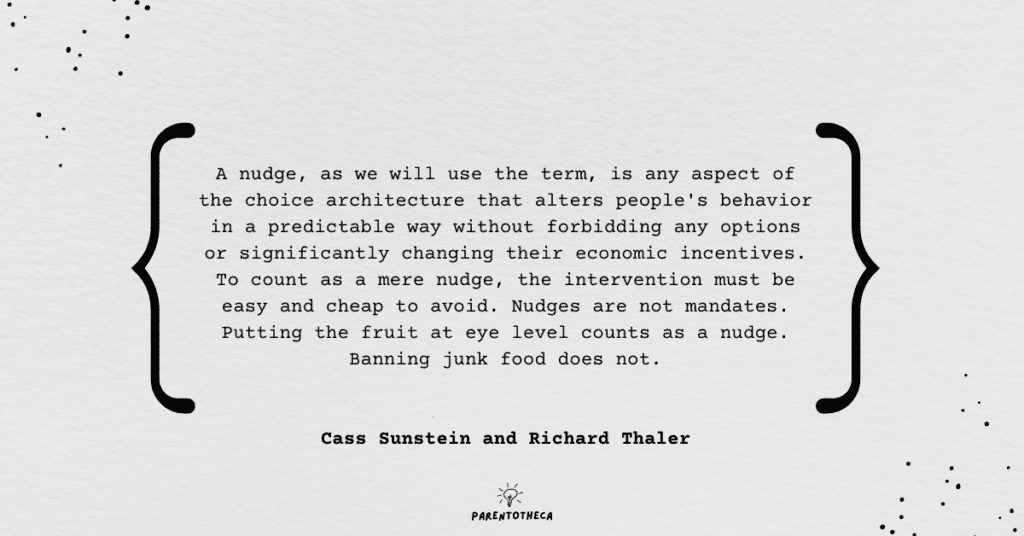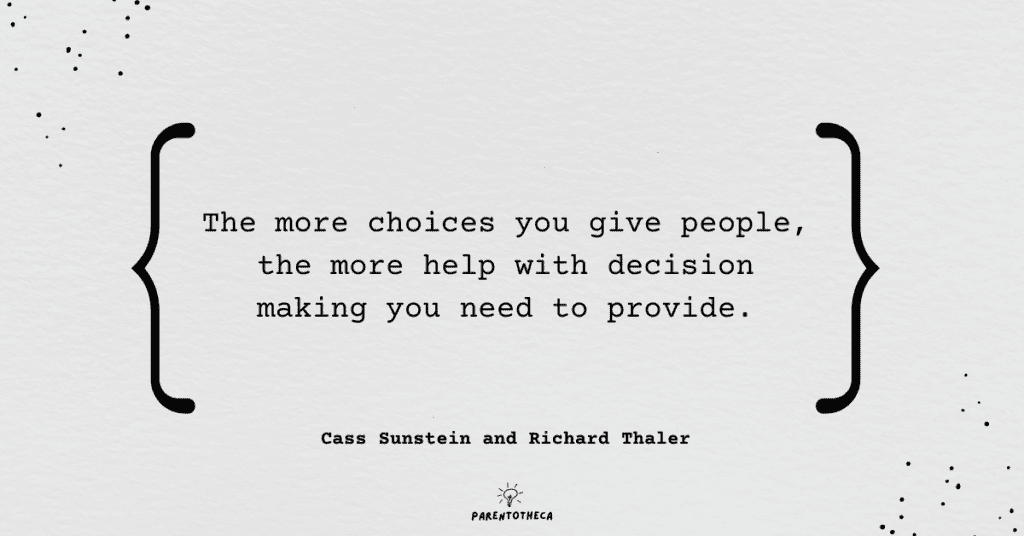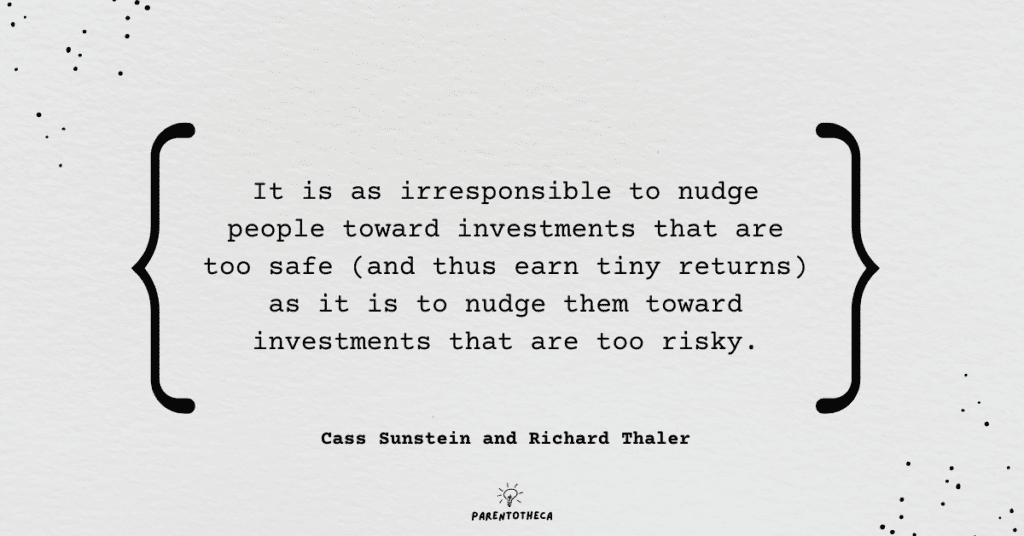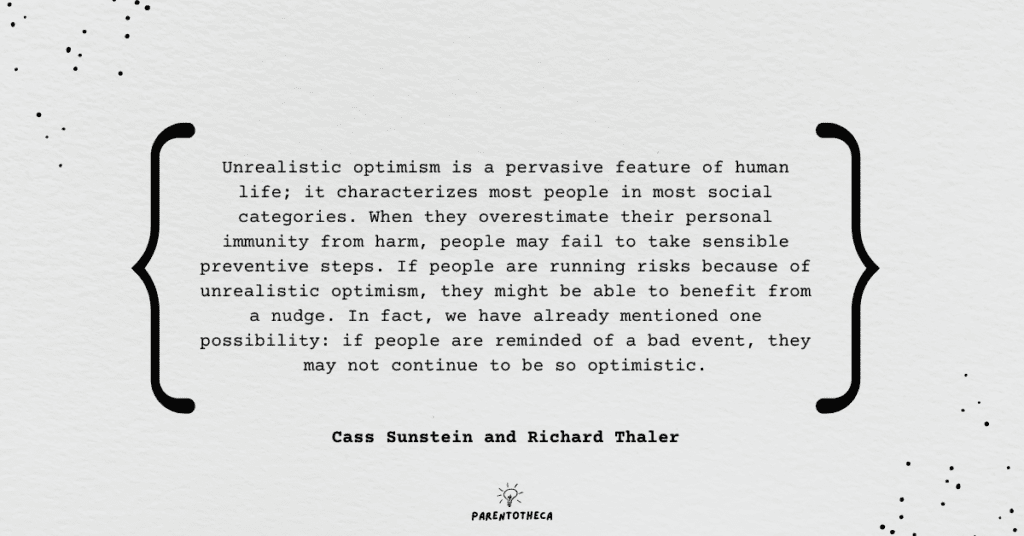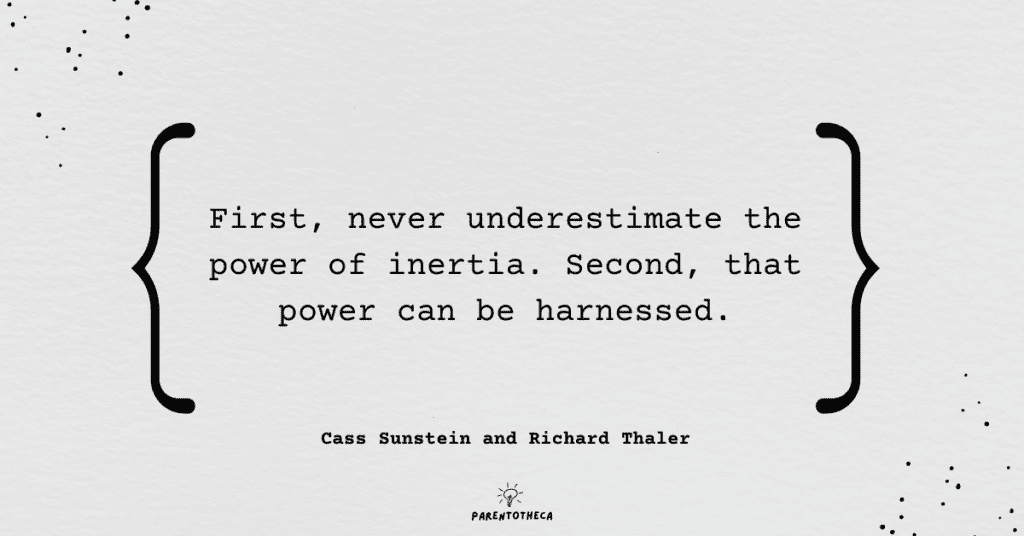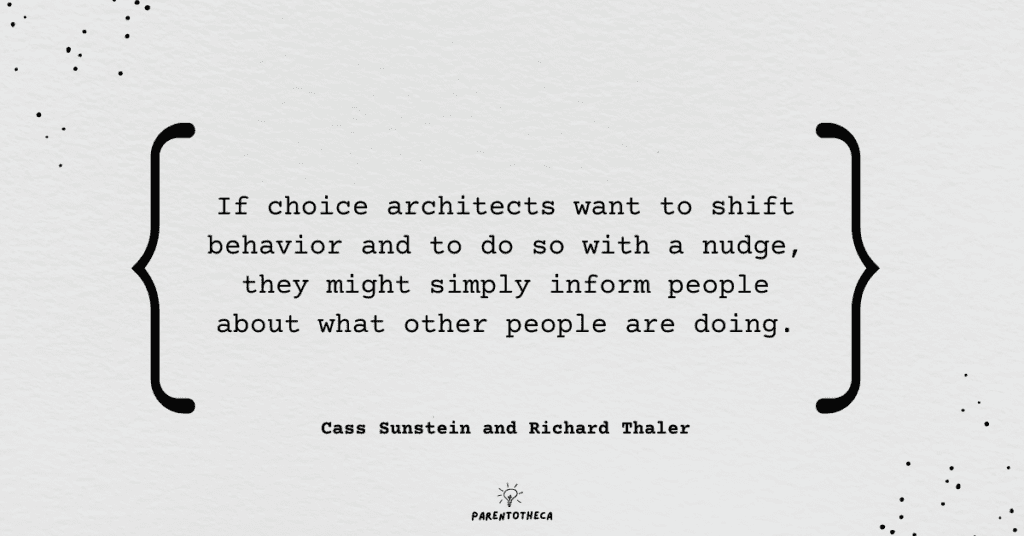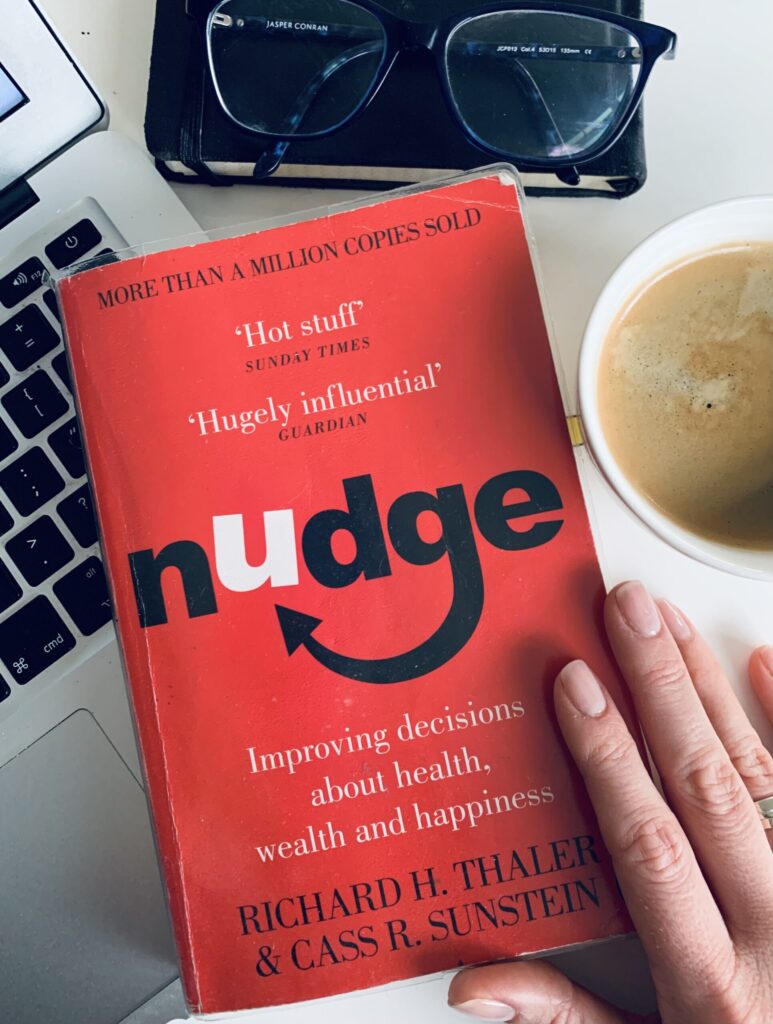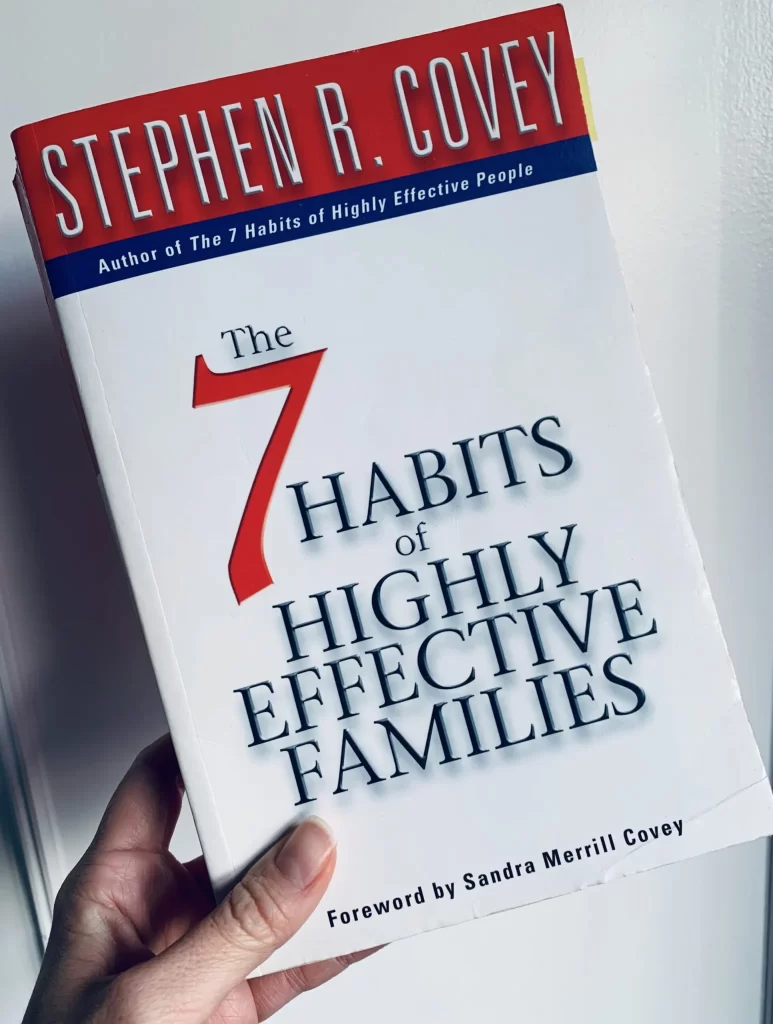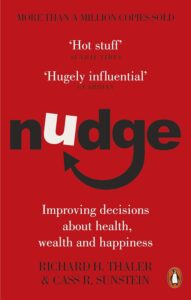 Nudge
Nudge
Improving Decisions About Health, Wealth and Happiness
Cass R. Sunstein and Richard H. Thaler
Penguin; 1st edition (5 Mar. 2009)
About The Authors
Richard H. Thaler is a pioneer in the fields of behavioral economics and finance. He is the Charles R. Walgreen Distinguished Service Professor of Economics and Behavioral Science at the University of Chicago’s Graduate School of Business. He is also a Research Associate at the National Bureau of Economic Research where he co-directs the behavioral economics project. Professor Thaler’s research lies in the gap between psychology and economics. He is the author of numerous articles and the books Misbehaving; Nudge, The Winner’s Curse, and Quasi Rational Economics and was the editor of the collections: Advances in Behavioral Finance, Volumes 1 and 2. In 2017 He won the Nobel Prize in Economic Sciences for his contributions to behavioral economics.
Cass R. Sunstein is the Robert Walmsley University Professor at Harvard Law School, where he is the founder and director of the Program on Behavioral Economics and Public Policy. He is by far the most cited law professor in the United States. From 2009 to 2012 he served in the Obama administration as Administrator of the White House Office of Information and Regulatory Affairs. He has testified before congressional committees, appeared on national television and radio shows, been involved in constitution-making and law reform activities in a number of nations, and written many articles and books, including Simpler: The Future of Government and Wiser: Getting Beyond Groupthink to Make Groups Smarter.
About The Book
“A choice architect has the responsibility for organizing the context in which people make decisions. Although Carolyn is a figment of our imagination, many real people turn out to be choice architects, most without realizing it. If you design the ballot voters use to choose candidates, you are a choice architect. If you are a doctor and must describe the alternative treatments available to a patient, you are a choice architect. If you design the form that new employees fill out to enroll in the company health care plan, you are a choice architect. If you are a parent, describing possible educational options to your son or daughter, you are a choice architect. If you are a salesperson, you are a choice architect (but you already knew that). […]
Good architects realize that although they can’t build the perfect building, they can make some design choices that will have beneficial effects. Open stairwells, for example, may produce more workplace interaction and more walking, and both of these are probably desirable. And just as a building architect must eventually build some particular building, a choice architect like Carolyn must choose a particular arrangement of the food options at lunch, and by so doing she can influence what people eat. She can nudge.”
Published in 2008, Nudge by Richard Thaler and Cass Sunstein has become a global phenomenon, selling over two million copies and sparking discussions in diverse settings. This influential book proposes a simple yet powerful idea: subtle changes in how choices are presented can significantly influence our decisions.
Here, Thaler and Sunstein introduce the idea of libertarian paternalism. This approach uses gentle nudges to guide individuals towards better choices while respecting their freedom of choice.
Nudge delves into the fascinating world of behavioural economics, where psychology meets economics to explain how and why we make the choices we do. Through captivating examples and compelling research, the authors demonstrate how nudges can be applied in personal and public spheres to improve decisions related to health, wealth, and happiness.
Whether you’re a parent, teacher, entrepreneur, or policymaker, Nudge offers valuable insights into how you can help people make better decisions. I personally LOVED the book and can’t wait to share some of my favourite insights with you.
Now, let’s dive in.
P.S.: If you’re eager to delve deeper into behavioural economics and the fascinating world of decision-making science, I highly recommend picking up Thinking, Fast and Slow by Nobel Prize-winning psychologist Daniel Kahneman.
Key Insights
Common Biases
Thaler and Sunstein build on the work of Daniel Kahneman (author of the brilliant Thinking, Fast and Slow – check out our notes). They explain how our thinking boils down to two systems:
- System 1 (Automatic): This is your fast, intuitive thinking that makes quick decisions without much effort. It’s great for everyday situations but prone to biases and heuristics.
- System 2 (Reflective): This is your slower, more deliberate thinking that analyzes and weighs options. It’s the voice of reason, but it’s also quite lazy and often defers to System 1.
Now, biases. They are like mental shortcuts gone wrong. While they can be helpful sometimes, they also have a nasty habit of leading you astray, messing with your health, finances, and relationships.
In the book, Thaler and Sunstein cover the common biases:
- Anchoring: Overly relying on the first piece of information you get, even if it’s irrelevant.
- Availability: Judging the likelihood of something based on how easily you can recall it (think: scary news stories making us overestimate the risk of plane crashes).
- Representativeness: Judging something as likely if it fits our existing stereotypes or mental prototypes. We tend to ignore actual statistical probabilities.
- Unrealistic optimism and overconfidence: Overestimating our own abilities and the likelihood of positive outcomes. And underestimating risks.
- Loss aversion: We feel losses much more strongly than the equivalent gains. This leads to risk-averse decisions just to avoid even small losses.
- Status Quo bias: We have a strong preference for things to stay the same. We resist change, even if the change might be beneficial.
- Framing: Our decisions are swayed by how information is presented. The same information can lead to different choices if presented positively or negatively.
- Herd Mentality: Our decisions are heavily influenced by what others do. We tend to conform to the group, even if it means making suboptimal choices.
- Priming: Our responses are subconsciously affected by earlier stimuli. A word, image, or idea can subtly influence our later choices.
The bottom line here is that choice architects can leverage these biases to nudge people and influence their behaviour.
Enter Libertarian Paternalism.
Libertarian Paternalism Concept
“The libertarian aspect of our strategies lies in the straightforward insistence that, in general, people should be free to do what they like – and to opt out of undesirable arrangements if they want to do so. To borrow a phrase from the late Milton Friedman, libertarian paternalists urge that people should be ‘free to choose.’ We strive to design policies that maintain or increase freedom of choice. When we use the term libertarian to modify the word paternalism, we simply mean liberty-preserving. And when we say liberty-preserving, we really mean it. Libertarian paternalists want to make it easy for people to go their own way; they do not want to burden those who want to exercise their freedom.
The paternalistic aspect lies in the claim that it is legitimate for choice architects to try to influence people’s behavior in order to make their lives longer, healthier, and better. In other words, we argue for self-conscious efforts, by institutions in the private sector and also by government, to steer people’s choices in directions that will improve their lives. In our understanding, a policy is ‘paternalistic if it tries to influence choices in a way that will make choosers better off, as judged by themselves.”
That’s Libertarian Paternalism in a nutshell.
Think of it like this: you’re at a party, and your friend sees you reaching for the last slice of cake. Instead of snatching it away and lecturing you about sugar intake, they discreetly point you towards the fruit platter. That’s a nudge. They’re not taking away your freedom to choose, but they’re subtly nudging you towards a potentially healthier option.
So, libertarian paternalism isn’t about controlling our lives. It’s about acknowledging that we’re not always rational decision-makers and that a gentle nudge in the right direction can sometimes be all it takes to make choices that benefit us in the long run.
Following The Herd
“Social influences come in two basic categories. The first involves information. If many people do something or think something, their actions and their thoughts convey information about what might be best for you to do or think. The second involves peer pressure. If you care about what other people think about you (perhaps in the mistaken belief that they are paying some attention to what you are doing – see below), then you might go along with the crowd to avoid their wrath or curry their favor.
For a quick glance at the power of social nudges, consider just a few research findings:
- Teenage girls who see that other teenagers are having children are more likely to become pregnant themselves.
- Obesity is contagious. If your best friends get fat, your risk of gaining weight goes up.
- Broadcasters mimic one another, producing otherwise inexplicable fads in programming. […]
- The academic effort of college students is influenced by their peers, so much so that the random assignments of first-year students to dormitories or roommates can have big consequences for their grades and hence on their future prospects. (Maybe parents should worry less about which college their kids go to and more about which roommate they get.)
- In the American judicial system, federal judges on three-judge panels are affected by the votes of their colleagues. The typical Republican appointee shows pretty liberal voting patterns when sitting with two Democratic appointees, and the typical Democratic appointee shows pretty conservative voting patterns when sitting with two Republican appointees. Both sets of appointees show far more moderate voting patterns when they are sitting with at least one judge appointed by a president of the opposing political party.
The bottom line is that Humans are easily nudged by other Humans. Why? One reason is that we like to conform.”
That’s why it’s crucial to choose our friends wisely! Especially in today’s social media age, we need to be mindful of what we (and our kids) consume online.
Now, let’s talk nudges. They can harness the power of conformity for good. In Nudge, Thaler and Sunstein share captivating examples, from boosting tax compliance (“More than 90 percent of Minnesotans already comply”) to curbing energy usage (“Your energy consumption this month was above average in your neighborhood”) and reducing student alcohol consumption (“Most (81 percent) of Montana college students have four or fewer alcoholic drinks a week”).
P.S.: By the way, you’re not just a mindless sheep. You can acknowledge this bias and consciously choose to be more aware of the influences around you. Be mindful.
When Do We Need a Nudge – The Golden Rule of Libertarian Paternalism
“We have seen that people perform amazing feats but also commit ditzy blunders. What’s the best response? Choice architecture and its effects cannot be avoided, and so the short answer is an obvious one, call it the golden rule of libertarian paternalism: offer nudges that are most likely to help and least likely to inflict harm. A slightly longer answer is that people will need nudges for decisions that are difficult and rare, for which they do not get prompt feedback, and when they have trouble translating aspects of the situation into terms that they can easily understand.”
So here’s the golden rule: help more, harm less. We want nudges that support good choices without feeling like an annoying backseat driver.
But when do we need these nudges the most? When our choices are:
- Difficult and rare: Like making a significant financial investment or choosing a mortgage. Complex decisions with long-term consequences can be overwhelming, making a nudge a helpful guide.
- Lack of immediate feedback: Think unhealthy eating or bad study habits. The good feelings are instant, but the negative consequences take time to show up, making it easy to fall into a trap.
- Hard to translate: Picking a retirement plan or health insurance can be like deciphering ancient scrolls. We need a nudge to understand how our choices translate into real-life experiences.
These situations are like slippery slopes, and a well-timed nudge can be the handrail that keeps us from falling.
This whole libertarian paternalism thing makes you realize how important it is for parents and caregivers to master the art of nudging. We’re basically shaping little humans, teaching them to navigate this crazy world and make good decisions. We want them to eat healthy, ditch the screens for some actual playtime, do their homework, and hang out with decent friends (because bad influences are a recipe for disaster). So, they will always benefit from a friendly nudge that helps them develop good habits and make decisions that benefit them in the long run, all while preserving their sense of control.
P.S.: Need to kick a bad habit or build a good one? Nudges can help here too. James Clear, in his book Atomic Habits, uses some of these principles to help us create lasting change.
Six Principles of Choice Architecture
In their book, Thaler and Sunstein introduce us to the six principles of good choice architecture, cleverly packaged into the mnemonic NUDGES.
Let’s dive into each one:
- INcentives: Incentives are the classic cost/benefit or loss/gain of choosing one thing over another. Provide the right incentives for the right people to enable good decision making processes.
- Understand mappings: Make sure options are presented in a way that’s easy for people to grasp and compare. A well-designed system helps people to improve their ability to map and, therefore, to select options that will make them better off.
- Defaults: Many people take whatever option that requires the least effort (“the path of least resistance”). Choice architects set a default option that nudges people towards a particular choice, which they can stick with or change if they wish. People often leave the default decision on if they are too lazy to make a decision.
- Give feedback: A good way to help humans improve their performance is to provide feedback. Well-designed systems tell people when they are doing well and when they made a mistake.
- Expect error: Recognise that people might make mistakes and design systems to minimize the impact of those errors. Choice architects put controls in place to guide people in avoiding errors or mistakes.
- Structure complex choices: When choices become too abundant, people tend to find ways to simplify them and break them down. Good choice architecture will find ways to make this more evident for people.
Think of it as your cheat sheet to hacking human behaviour (but in a good way, like getting someone to eat their vegetables without a fight).
Actionable Steps:
- Assess Default Settings: Evaluate default options in various aspects of your life, such as savings plans, subscriptions, or health behaviours. Consider whether these defaults align with your goals and values, and adjust them accordingly if necessary.
- Identify Nudging Opportunities: Start by recognizing situations in your daily life where you can implement nudges to improve decision-making. Whether it’s setting default options on your devices to limit screen time or rearranging your environment to encourage healthier habits, look for opportunities to apply the principles of choice architecture in your own life.
- Practice Mindful Awareness of Marketing Influence: Develop a habit of consciously recognizing when you’re being nudged into impulsive decisions by marketers. Pay attention to subtle cues, such as persuasive language, emotional appeals, or social proof tactics, used in advertisements, promotions, or sales pitches. By becoming more aware of these influences, you can pause, reflect, and make decisions based on your own values and priorities rather than succumbing to external pressures.
Quotes From The Book
